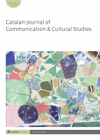
Full text loading...

This article highlights diversity and pluralism in the field of public relations. It challenges the normative ideals that books have traditionally taught us about how communication between organizations and their public should be. A review of the importance of personal and patronage relationships in non-western countries from every continent (Latin America and Southern Europe, China, India and Sub-Saharan Africa) shows a rich and complex reality about how communication happens. It reveals that we do not live in a perfect, predictable world – not necessarily a negative factor, but rather a source of richness. This should not be surprising news since the United States, Canada, Australia and western EU countries represent approximately just 8 per cent of the world population. A main diversity factor in strategic communication is the importance of patronage relationships, often ignored or minimized in books on the subject. Offering multiple perspectives aims to show how the importance of considering the construction of personal relationships as part of the strategic menu of organizations should not be stigmatized or considered an undesired outcome to eradicate. In most societies, patronage relationships and personal relations play a large role when organizations build relationships with their public.

Article metrics loading...

Full text loading...
References


Data & Media loading...

Publication Date:
https://doi.org/10.1386/cjcs_00096_1 Published content will be available immediately after check-out or when it is released in case of a pre-order. Please make sure to be logged in to see all available purchase options.